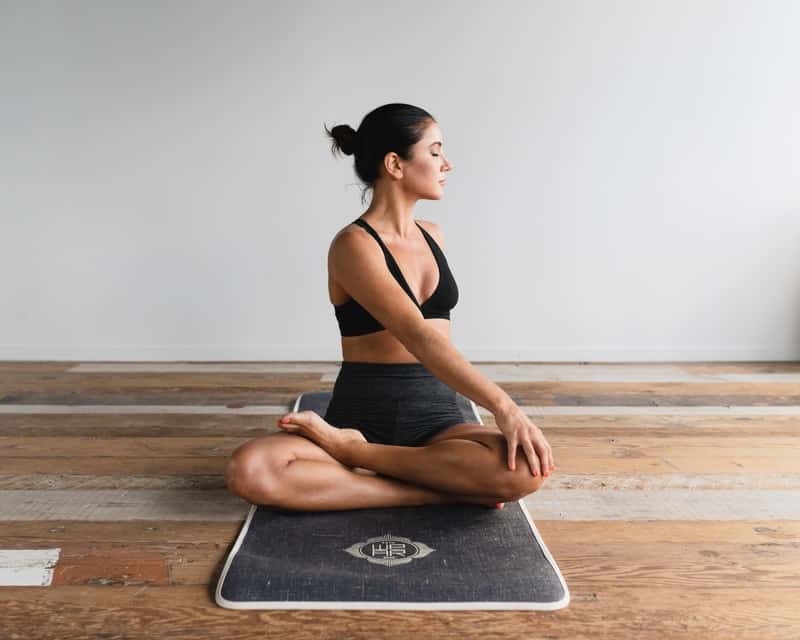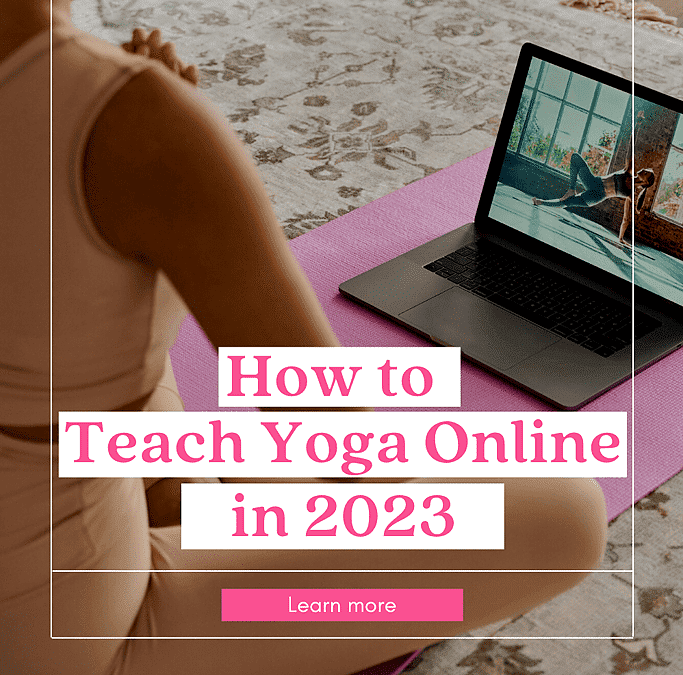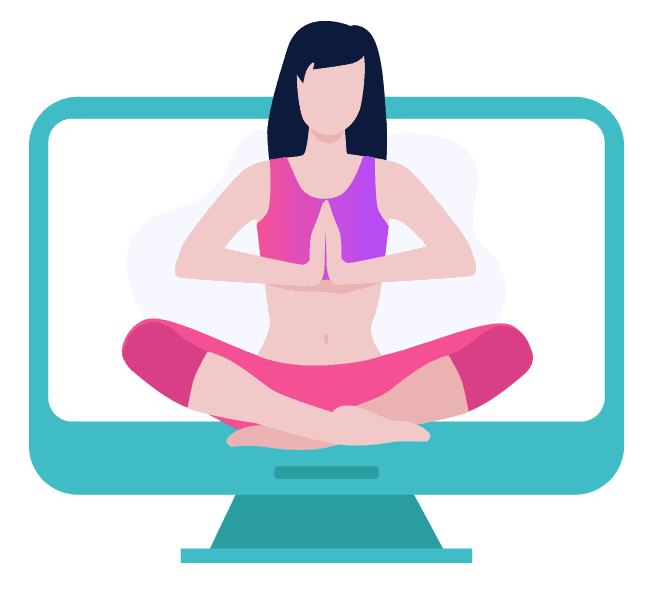Are you a yoga teacher looking for new ways to share your knowledge and experience with the world?
With the rise of online learning, teaching yoga online has become a viable option for many instructors. Not only can it allow you to reach a wider audience, but it can also be a great source of income and can help you grow your yoga business in other areas like coaching and physical products.
In this article, we’ll explore how you can teach yoga online in 2023, step-by-step. We’ll also be discussing AccessAlly, the WordPress plugin that is perfect for coaches who want to do more than just coaching – like selling courses, memberships, and building online communities.
If you’re ready to take your yoga teaching to the next level, keep reading!
Benefits of teaching yoga online
Teaching yoga online has many benefits that can help yoga teachers reach more people, build a diverse student base, and grow their business. Online yoga classes, delivered via video conferencing or pre-recorded classes, offer the same benefits as traditional in-person classes, but with added convenience and accessibility for both teachers and students.
One of the biggest benefits of teaching yoga online is the ability to create niche classes that you might not be able to find a market for in person. This can open up new opportunities for teachers to specialize in particular types of yoga and reach a target audience that would not have been possible otherwise. Online classes also allow teachers to reach more people, regardless of their location, building a larger audience and increasing revenue potential.
In addition to these benefits, online classes offer a lot of flexibility and options to both teachers and students. They can be recorded and made available for playback at any time, allowing teachers to offer classes at different times and making it easier for students to fit yoga into their busy schedules. Teachers can also offer different types of classes, such as beginner, intermediate, and advanced, as well as classes that cater to specific needs, such as prenatal yoga or yoga for seniors.
Online teaching is also more accessible to people with mobility issues or disabilities who may not be able to attend traditional in-person classes. Furthermore, students can take the classes from the comfort of their own homes, eliminating the need for travel and the associated time and money cost of this.


Why you should teach yoga online in 2023
Since the start of the Coronavirus pandemic in 2020, the world of online classes and training courses saw huge growth, and yoga was no exception. A study from April 2020 indicated that 33% of people surveyed were at least somewhat interested in online yoga or meditation.
This rising interest in yoga has also been mirrored by a rise in specialized platforms for online yoga teaching. One example of this is Aloyoga, an online platform where students can pay for access to unlimited yoga videos.
How to start selling yoga courses online
As we’ve seen, teaching online opens up a whole new world of possibilities for yoga teachers, allowing them to reach a wider audience, increase revenue potential, and improve the experience for their students, and there is no better time to get started than now! Let’s take a look at the steps you’ll need to take to become an online yoga teacher.
Preparing your program
Find your niche
One of the most important things to consider if you want to teach yoga online is finding your niche. Yoga is a vast and diverse practice, with many different styles and sub-disciplines to choose from. From Hatha and Yin yoga to Bikram and more, you can choose a specialty or two and create your courses around it.
When choosing your niche, it’s important to keep in mind what you’re good at teaching and what there’s a demand for. You can use tools like surveys, Google Trends, and industry experts to get a sense of what your potential students are looking for, and to help you identify the areas in which you can excel. It’s also important to remember that people choose to work with a certain teacher because of who that person is and their unique personality. So, don’t try to be like every other yoga teacher, but instead infuse your own uniqueness into your teaching and website/social media.
That being said, don’t be afraid to mix and match different styles of yoga to find the perfect combination for your students. For example, you might want to do a Bikram yoga course for toning muscles or a bedtime Yin yoga course that helps people relax before they go to sleep. Your niche doesn’t have to be confined to one specific area of yoga; you can always combine and experiment to create something that aligns with your strengths and interests.
Get qualified
In order to teach yoga in many countries around the world, you’ll need a yoga teacher training certification of 200+ hours. This typically costs somewhere in the range of $1000–3000. When you are looking for a certification, make sure that it’s registered and certified by Yoga Alliance, with reviews on the Yoga Alliance website.
While getting certified may seem costly, gaining yoga certification is an investment that can have a high return if you plan on scaling your online yoga practice to teach in any country that regulates yoga teachers and training.


Sketch out your program
Once you’ve identified your niche and have a good understanding of what you want to teach in your online yoga course, it’s time to sketch out your program. This means outlining the structure of your course, including how many modules it will have, how long they’ll each be, and if they need to be watched in order.
It’s also important to set the type of student you’ll be teaching, whether they are beginners, intermediate, or advanced. This will help you determine the level of complexity and depth of your content and ensure that you’re providing your students with the right level of information and instruction.
Before recording any video, it’s essential to plan out all the material you’ll need. This includes:
- Preparing a script.
- Outlining the order of videos.
- Ensuring you have all the necessary props, equipment, and resources.
This way, when it comes time to record your videos, you’ll have a clear plan in place, and the process of recording will be a simpler task.
This may take some time, but it’s crucial to take this step and plan everything carefully to ensure your course is structured in a logical and engaging way. This is your roadmap, a guide that keeps you on track to creating a successful and professional program for your students.
Producing your online video course
Find the perfect recording space
Once you’ve sketched out your program, and you have a clear idea of what you want to teach and how you want to teach it, it’s time to start thinking about where you’ll record your videos. There are a few options available to you when it comes to choosing a location to record, and the best one for you will depend on your specific needs and resources.
One option is to take inspiration from other online yoga instructors and use a room available to you to create a simple space to record. This could be a spare room in your home, a dedicated yoga studio, or even a community center or gym. The key is to find a space that is quiet, with minimal distractions, and that has good lighting and sound.
Another option is to record your videos in your bedroom or living room by moving some things around temporarily while you record. This could be an affordable and convenient solution for those who don’t have access to a dedicated recording space.
Regardless of the room you choose, it’s essential to ensure that your recording space is free of distractions and disruptions and that the lighting and sound quality are good. This way, you ensure your students are getting the best experience, and that’s what you should aim for.
Gather the right video and audio equipment
With your recording space chosen, it’s time to focus on the technical aspects of creating your online yoga course, specifically video and audio.
For many, this can be the most intimidating part of creating an online course. However, it’s essential to remember that the most important part of your course is the content. The quality of your video and audio can improve over time as your online yoga business grows.
You don’t need to invest in expensive equipment or have a professional video production team to create high-quality videos. Simple tools like a smartphone or a basic camera, and a microphone for better sound quality, can work just fine; just make sure you have enough storage and battery to record a full practice so you don’t end up with half a video that you can’t use!
Investing in a tripod to provide your recordings with more stability and ensure that the camera remains at the right height and angle is an inexpensive way to improve your recording quality. You can also use editing software to improve the quality of your videos, but that’s not a requirement.
For audio, you can use a simple clip-on Bluetooth microphone or do a voice-over on the video, which you add during editing. Taking the time to produce good audio for your videos will ensure that your students can hear your instructions clearly and that your voice is not drowned out by background noise, which will help to promote better engagement.
It’s important to remember that what matters most is the clarity and engagement of your instructions, not the technical quality of the video. That’s why it’s always good to practice, test and improve along the way, and focus on delivering the best content you can to your students.
Ensure you have good lighting
Good lighting ensures that your students can clearly see your movements and follow your instructions. The right lighting will also give your videos a more polished and professional look.
There are a few things to keep in mind when it comes to lighting for your online yoga course. First, it’s essential to ensure that the lighting is bright enough so that your students can see your movements clearly. Second, it’s essential to have a consistent light source, which means that the lighting should be even across your entire practice area. This will make sure that your videos don’t look too dark or too bright.
You can order professional lighting or even an at-home version of professional lighting online. There are a lot of affordable lighting kits available, and they can make a huge difference in the quality of your videos. You can also use natural light if possible, but make sure that it’s not too bright or too dark, and that the lighting is consistent.
Prepare the perfect music
Music can be an important element to help set the tone and create the right atmosphere for your class. But, many teachers wonder about their options for using music in their videos without breaking copyright law. Since a yoga class is considered a public performance, it means you legally need permission to use music.
To avoid any issues, it’s essential to choose some music that is royalty-free. This means you can use it without having to pay royalties or worry about copyright infringement.
One of the options you can use to get royalty-free music is Epidemic Sound. You can access it online and get it for a monthly subscription, it works for social media, YouTube, and other videos you post. Other options include Free Music Archive and Pond5. These are websites that offer a wide variety of royalty-free music for you to choose from, and the best part is that you can use it for free – just make sure to check the terms of use and attribution.
Choose the right platform to start teaching yoga
One of the most popular options is teaching and live streaming on YouTube. Many yoga teachers start out by streaming live videos via their YouTube channels and posting videos to attract students. This is a great marketing strategy, but it’s a bad short-term business model because you need at least 4,000 valid watch hours and 1,000 subscribers in order to monetize a channel, and even then, you can’t guarantee a livable amount of monthly revenue.
Another option is to join a course platform like Udemy or Teachable or a yoga-focused platform. These platforms allow you to create and sell your own courses, but they often come with complicated pricing structures and don’t offer much as far as customization options are concerned. Additionally, by joining these platforms, you’ll be giving away a percentage of your revenue and control of your content and brand.
The most recommended way of selling yoga courses online is teaching on your own website. Teaching on your own WordPress website gives you full control over your content, brand, and design. This allows you to create a course that is tailored to your students’ needs and allows you to scale your business without being limited by platform fees and restrictions.
To make the process even easier, you can use the all-in-one plugin, AccessAlly, to design, create, engage, market, and sell your courses online easily. AccessAlly offers advanced features that are not available on most course platforms. For example, AccessAlly’s Community Ally feature allows students to engage with you and each other on a forum, which can help you to build your own yoga community, all within your website. Additionally, AccessAlly offers options for gamification features, such as quizzes, rewards, and more, to keep students motivated and committed to the practice.
By teaching on your own website, you’ll have the freedom to design your course exactly how you want it, offer features that other platforms don’t, and retain full ownership of your content and revenue.


Start marketing and selling your course
Once you have your online yoga course created, the next step is to market and sell it. Marketing is crucial to reaching your target audience and growing your business. One great way to market your course is by sharing short-form or sneak peek content on social media to attract leads to your website. This could be tips, poses, or other valuable content that your target audience would find interesting.
Another great way to keep your audience engaged is by creating a newsletter with weekly or monthly yoga practice tips, which you can share with your email list. This will keep your audience interested in your course and help you build a relationship with them. In your newsletter, you can also share valuable content that they can’t find on your website or social media pages.
When it comes to marketing and selling your course, AccessAlly is one of the best platforms to consider. One great feature that the plugin provides is its affiliate option. This allows your biggest fans to earn money by recommending your courses. It can be a great way to grow your business faster and get more leads.
Finally, you can consider pre-selling your yoga program. This can help you fund production and make sure you’re creating something people actually want before you put all of the effort into creating it. This can be a great way to validate your idea before you spend too much time and money creating it.
Case study: how The Yoga Abbey used AccessAlly to build their online yoga school
The Yoga Abbey is a unique yoga studio that combines religious practice with spiritual practice to create a contemplative yoga course. Using AccessAlly, The Yoga Abbey built a full online yoga studio with different instructors, types of classes, and memberships that have monthly, annual, and lifetime pricing options.
With AccessAlly, The Yoga Abbey can create and manage their different types of classes and programs, and make them available for purchase on their website. Additionally, they can offer different membership options, such as monthly, annual, or lifetime access to their classes, making it easy for students to find the perfect option for them.
By choosing AccessAlly, The Yoga Abbey keeps full control over their course content and how they sell it. As AccessAlly is built for WordPress, they also retain full control over the appearance of their website, allowing them to customize any aspect they need to fully match their brand’s style and design with no limitation.


Create your own online yoga studio with AccessAlly
Teaching yoga online is a great way to share your knowledge and experience with people all over the world and generate a steady income. The steps to creating an online yoga course include:
- Finding your niche.
- Sketching out your program.
- Choosing the right equipment.
- Paying attention to lighting.
- Choosing music that is royalty-free.
- Choosing the right platform.


The best option for creating and selling your course is to use your own website, specifically a WordPress plugin like AccessAlly. With AccessAlly, you’ll be running your own virtual yoga studio, where students are free to join live classes or watch unlimited video courses with memberships.
Your studio will have no opening or closing time and infinite possibilities for scaling and growing. You’ll also be able to design, create, engage, market, and sell your courses online easily, taking advantage of benefits like Community Ally and options for gamification, rewards, and more to keep students motivated and committed to the practice.
Don’t miss out on this opportunity to reach more students and grow your yoga business. Try AccessAlly today and create your own online yoga studio.







